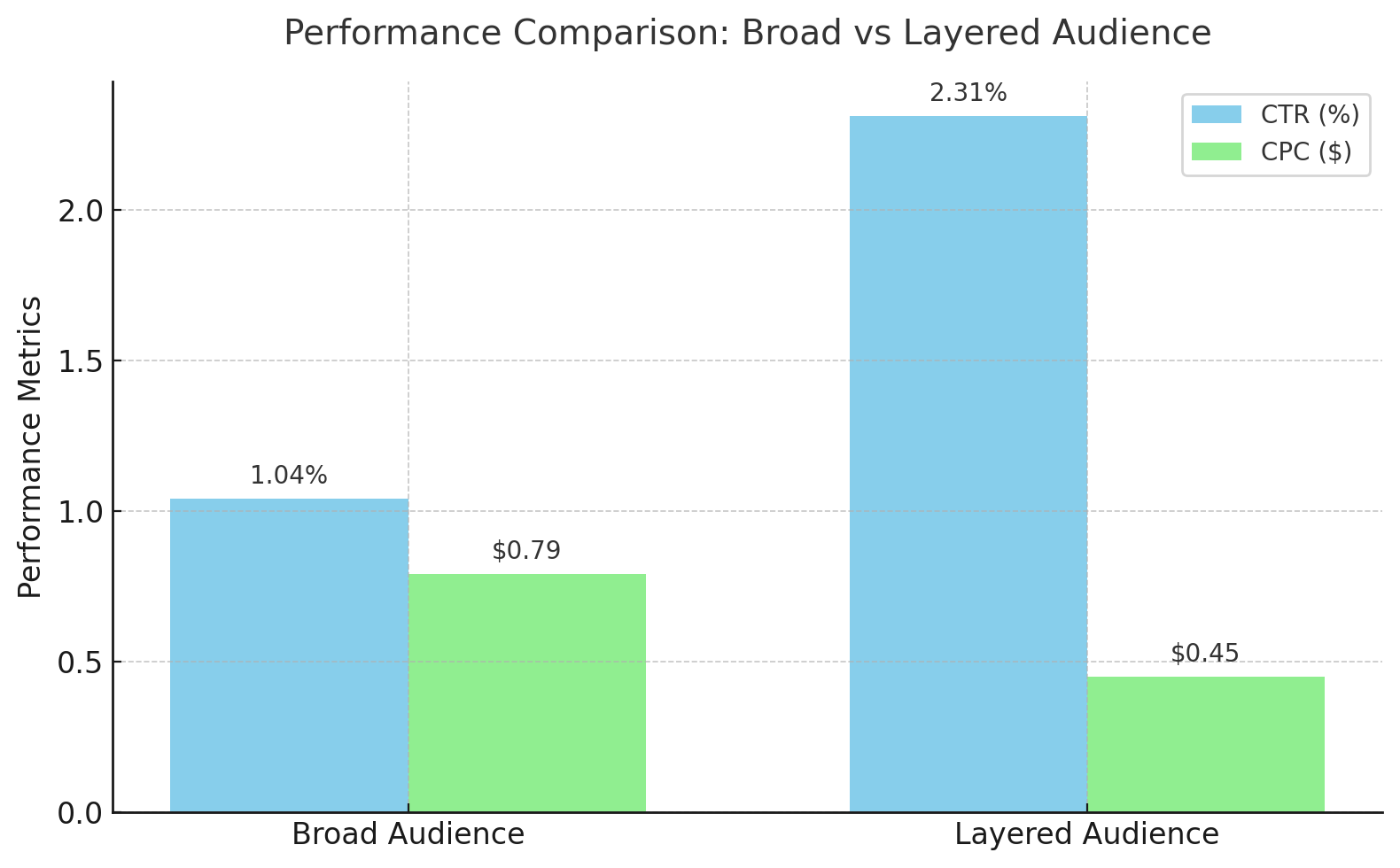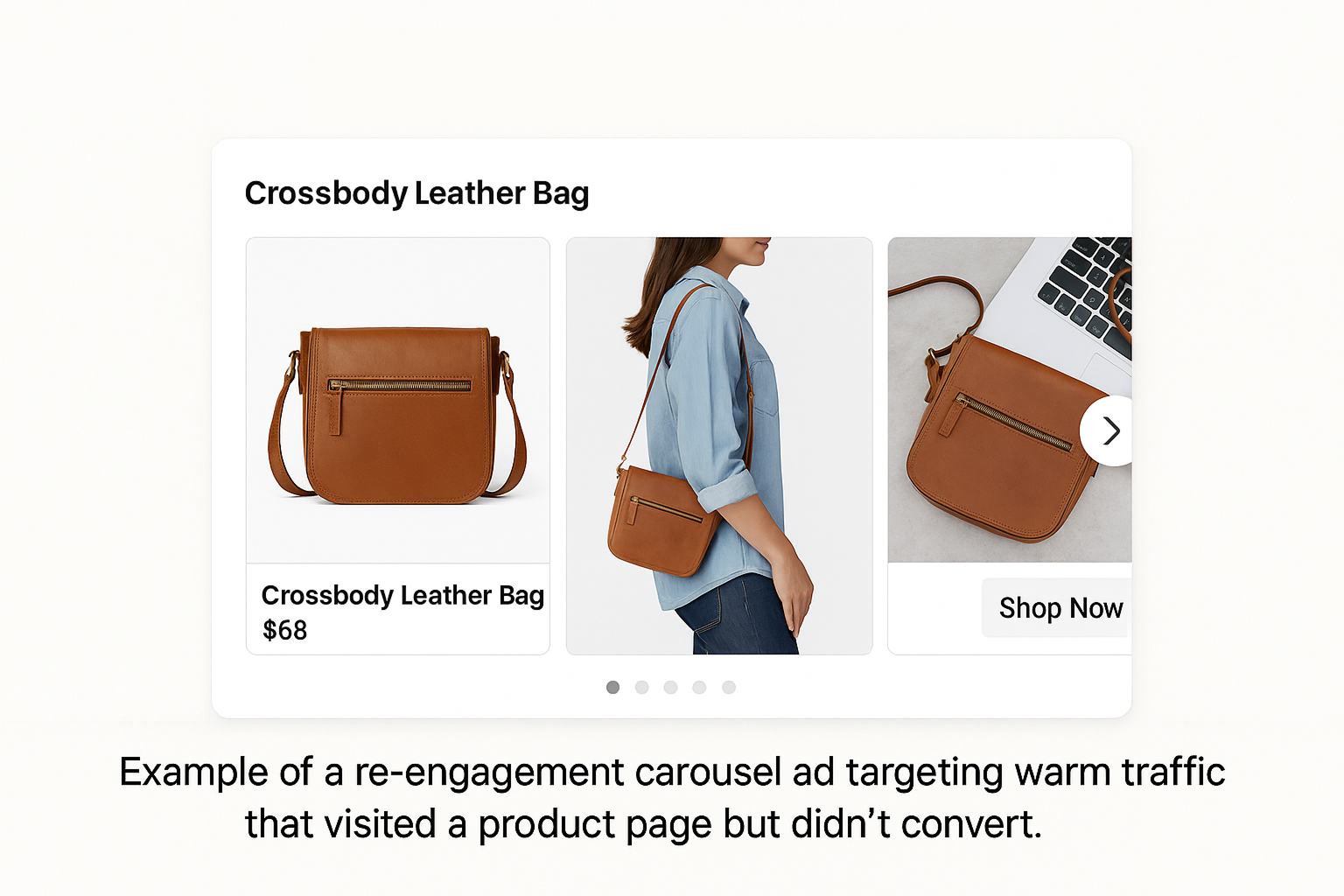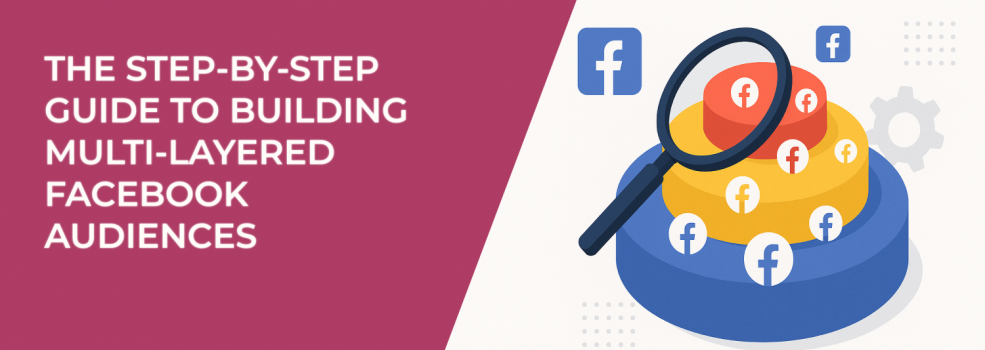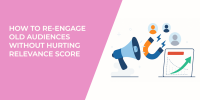If you’re running Facebook ads, chances are you’ve heard advice like “Know your audience.” But what does that really mean in practice? For serious advertisers, it's not enough to build a single broad audience and hope for the best.
You need to layer.
Multi-layered Facebook audiences go beyond basic interest targeting. They combine behaviors, lookalikes, exclusions, and custom segments to give your campaigns depth — and a better chance of converting.
In this guide, we’ll break down how to build these layered audiences, when to use them, and how to avoid the common traps that tank your relevance score and click-through rate.
Let’s dig in.
Why Layering Audiences Matters
Most Facebook advertisers start with broad strokes — demographics, one or two interests, and a general CTA. That might get you impressions, but not conversions.

When you layer your audiences properly, you:
-
Narrow your targeting without suffocating scale,
-
Serve more relevant ads to each segment,
-
Avoid overlap that drives up your cost-per-click,
-
Filter out people who will never convert — and fast.
Think of it like building a filter. Each layer removes the noise, letting you zero in on the people who are actually likely to click, engage, and buy.
Layering also helps lift your CTR by making the message feel tailored. If your campaigns are stuck with low engagement, you might want to check this guide to fixing low CTR.
Step 1: Start With a Broad Base (But With Intent)
Begin by choosing your core targeting category:
-
Interests, like “email marketing,” “eCommerce,” or “small business owners.”
-
Behaviors, such as “engaged shoppers” or “business page admins.”
-
Demographics, including age, gender, job titles, or relationship status — but only what’s truly relevant to your offer.
Now, this is the key: don’t throw everything in at once. Avoid combining too many unrelated interests. Facebook will lump them together using “OR” logic, which weakens your targeting.
Instead, group closely related interests — for example, “email marketing” and “Mailchimp” — and test them in separate ad sets.
Step 2: Add Engagement-Based Custom Audiences
Here’s where things get more strategic.
Use Custom Audiences to re-target people who have already interacted with your business. These aren’t cold leads — they’re warm. And warm traffic costs less to convert.

Good options to build custom layers include:
-
People who watched at least 50% of your video ads,
-
Visitors to specific landing pages in the past 30 days,
-
Instagram engagers (comments, likes, or story taps),
-
Users who initiated checkout but didn’t complete.
Each of these signals intent. Someone who stuck around to watch most of your explainer video is far more likely to convert than someone who just saw the thumbnail.
You can use these Custom Audiences as inclusions or exclusions. For example, you might target interest + behavior + video watchers, while excluding past buyers or low-quality leads.
Need more on this? Here’s everything you need to know about Facebook Ads audiences, including how to build smarter segments from scratch.
Step 3: Layer Lookalikes — But Be Precise
Lookalike audiences can be powerful — but only if your source data is strong.
If you build a lookalike from everyone who visited your site, your result will be diluted. If you build it from your highest-LTV customers or best-performing leads, the signal is much clearer.
Tips for using lookalikes in a layered structure:
-
Narrow the source — use filters like high average order value, long session durations, or qualified leads only.
-
Control the size — a 1% lookalike gives tight targeting; 3–5% gives broader reach but less precision.
-
Stack with interests or behaviors — for example, “lookalike of top buyers” and “business decision-makers.”
Still not sure whether to lean on custom or lookalike audiences? This breakdown compares both and explains when to use each.
Pro tip: LeadEnforce lets you create custom audiences based on people who follow specific Facebook groups or pages — something Meta’s native tools don’t offer. It’s a smart way to seed high-quality lookalikes or create hyper-niche layered audiences that convert.
Step 4: Use Exclusions to Avoid Wasted Spend
One of the most underused features in Facebook Ads Manager?
The Exclude option.
Every strong multi-layered audience should also include thoughtful exclusions to prevent wasted spend. Otherwise, you might target the same people multiple times — or hit audiences who already bounced.
Exclusions worth testing:
-
Previous purchasers (in prospecting campaigns),
-
Leads who didn’t qualify or convert,
-
Cold traffic that already saw your offer,
-
Overlapping ad sets (check this with Facebook’s built-in tool).
Want to stop seeing “Ad Set May Get Zero” alerts? You’re likely targeting too narrowly or overlapping with other sets. Here’s how to fix it.
Step 5: Test Audience Combinations Separately
It’s tempting to throw all your layers into a single audience and hit launch. But you’ll never know what’s working.
Build separate ad sets to test:
-
Interest + Behavior,
-
Lookalike + Behavior,
-
Interest + Custom Audience,
-
Lookalike + Interest + Exclusion.
Start by keeping the same creative across tests. Let the audience variables do the heavy lifting. Once you find a strong performer, then experiment with new formats, hooks, or offers.
Need help aligning messaging with the right segment? This targeting guide breaks down how to tailor ads for cold, warm, and hot audiences alike.
Bonus: Use Facebook Audience Insights (While You Still Can)
Even though Meta is deprecating parts of Audience Insights, it still offers useful data: page affinities, top locations, and devices used.
These signals help refine your layers. If your audience mostly uses mobile? Go vertical and short-form. If they like a niche software brand or publication? That’s another interest to test.
Small insights can spark big wins.
Final Thoughts: Don’t Build Once and Forget
Layered audiences aren’t set-it-and-forget-it. The best advertisers revisit their targeting monthly — checking for cost spikes, creative fatigue, and audience overlap.
Keep this habit: review your top audiences every 30 days.
Want more ways to sharpen your segmentation? Dive into everything you need to know about Facebook Ads audiences — including overlooked tactics for B2C, B2B, and eCommerce brands.

